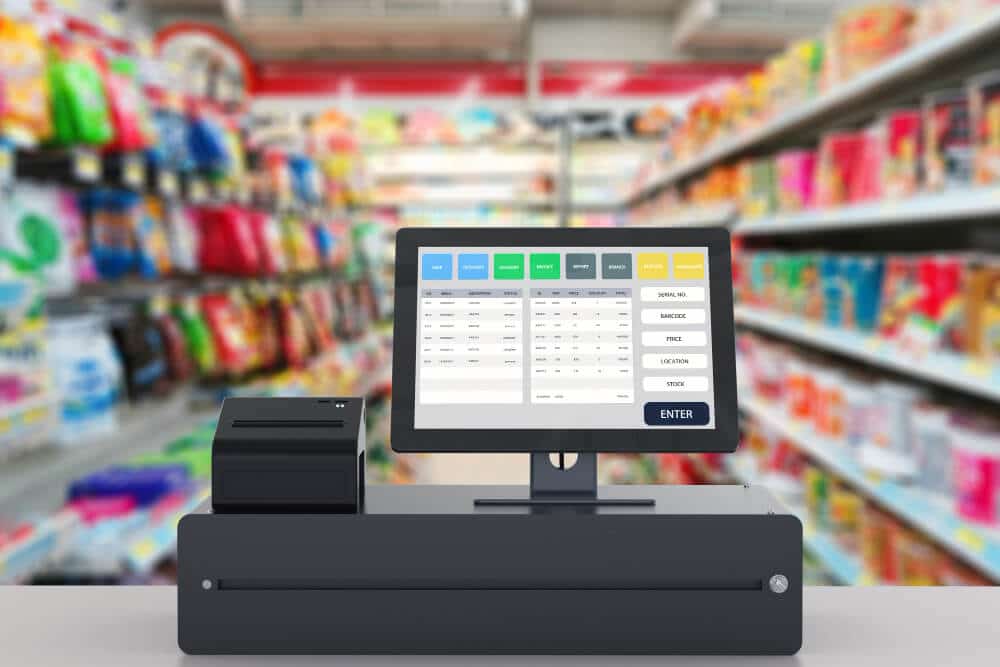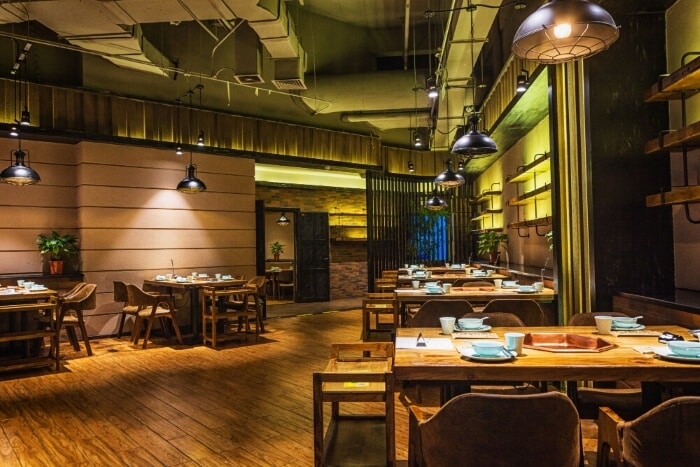Opening a restaurant might be profitable but it is not an easy task. Aside from the huge amount of time and effort, you’ll have to put in, you also need a lot of money to get started.
How much money, exactly? That depends on a variety of factors, including the type of restaurant you want to open, the location, and the size. But in general, you can expect to spend anywhere from $50,000 to $500,000 to get your restaurant up and running.
Of course, that’s just a broad range. The actual amount you’ll need will vary depending on several factors. Every restaurant is different and every owner has different goals, so there’s no one-size-fits-all answer to this question.
But starting a decent restaurant indeed costs a significant amount of money. So, if you’re thinking about opening a restaurant, it’s important to understand the different types of costs you’ll need to account for. In this article, we’ll break down the average cost to open a restaurant and give you some tips on how to cut down on your costs.
Table Of Content
The average cost to open a restaurant
Breaking down restaurant startup costs
One-time costs
Recurring and Ongoing Costs
Other miscellaneous costs
How can I cut down on my restaurant costs?
The average cost to open a restaurant
The average cost of opening a restaurant varies widely, depending on the type of restaurant you want to open. For example, a fast food restaurant will cost less to open than a sit-down restaurant. And a franchise restaurant will cost more to open than an independent restaurant.
Here are some estimates of how much it costs to open different types of restaurants:
- Fast food restaurant: $50,000 to $100,000
- Casual dining restaurant: $200,000 to $1 million
- Fine dining restaurant: $1 million to $5 million
- Food truck: $20,000 to $100,000
- Pop-up restaurant: $3,000 to $5,000
As you can see, the cost to open a restaurant can range from a few thousand dollars to several million dollars. The type of restaurant you want to open will have a big impact on your startup costs.
Now location is also a big factor in how much it costs to open a restaurant. If you want to open a restaurant in a major city, you can expect to pay more in rent and other expenses than if you opened in a smaller town. You also have to remember that major cities have more foot traffic, so you’ll be in profit faster than in a smaller town.
Size is another factor that will impact your startup costs. A larger restaurant will cost more to build than a smaller one. But it will also have higher ongoing costs, such as utilities and labor. So you have to decide what size restaurant makes the most sense for your concept and your budget.

Streamline your business with Octopos– A Complete POS System with Big Boys Tools without the Big Price
It is a lot more than a point of sale. Octopos is easy and intuitive for you and your staff to use. Yet you get all these sophisticated tools to manage inventory, track and engage customers, get meaningful insights into your business, and much more.
Breaking down restaurant startup costs
Now that you have an idea of how much it costs to open a restaurant, let’s break down the different types of costs you need to account for in your budget.
There are mainly two types of restaurant costs:
1. One-time costs: One-time costs are the costs you incur to get your restaurant up and running. These are the costs you need to pay before you can open your doors to customers.
2. Recurring and ongoing costs: Recurring and ongoing costs are the costs you have to pay on an ongoing basis to keep your restaurant running.
Read Also: The Costs Involved in Starting a Coffee Shop
One-time costs
Let’s take a look at some of the one-time costs you need to account for when budgeting to open a restaurant:
Necessary Licenses and Permits
The restaurant business falls under Food and beverage service, which is a heavily regulated industry. So before you can open your restaurant, you need to obtain the necessary licenses and permits from your local government. The specific licenses and permits you need will vary depending on the type of restaurant you’re opening and the state.
But in general, you’ll need to apply for a business license, a food license, and a liquor license (if you plan on serving alcohol). Now when it comes to cost, it can be anywhere between $100 to $1,000 depending on the state and the type of restaurant you want to open.
Check Out: How to Get a Wholesale License?
Commercial Space
Of course, you need a place to open your restaurant. And depending on the type of restaurant you want to open, the cost of commercial space can range widely.
For example, if you want to open a fast food restaurant, you can get away with renting a small space in a strip mall. But if you want to open a fine dining restaurant, you’ll need a larger space, such as a stand-alone building. And the same thing goes with food trucks or pop-up restaurants.
They’re much less expensive to open than a brick-and-mortar restaurant because you don’t have to pay for commercial space.
The cost of commercial space will also vary depending on the location. If you want to open your restaurant in a high-traffic area, you can expect to pay more in rent than if you open in a less desirable location. On average, you can expect to pay rent in cities like LA $3,000 to $70,000 a month. Or if you are buying a space valued at $1 million, you can expect to pay between $150,000 to $350,000 as a down payment.
Renovations and Decoration
What makes a restaurant unique and inviting is its interior design. And depending on how extensive the renovations and decoration are, it can cost a pretty penny to get your restaurant up to your standards.
For example, if you’re opening a fast food restaurant, you won’t need to do much in terms of decoration. But if you’re opening a fine dining restaurant, you’ll need to invest in high-quality furnishings and décor to create an upscale ambiance.
The cost of renovations and decoration will also depend on the size of your space. If you have a large space, you’ll need to spend more money on furnishings to fill it up. But if you have a small space, you can get away with spending less money on decoration.
On average, you can expect to spend $10,000 to $50,000 on renovations and decoration for a small restaurant. For a larger restaurant, you can expect to spend $100,000 or more.
Also Read: How to Start a Smoke Shop?
Kitchen Equipment and Appliances
One of the main cost components of opening a restaurant is outfitting the kitchen with all the necessary equipment and appliances.
You can not ignore these costs as a commercial kitchen is expensive to set up. But how much you spend will depend on the type of restaurant you’re opening and the appliances and equipment you need. Also, you don’t want to spend money on cheap equipment as it will only need to be replaced sooner.
Some of the essential kitchen equipment you need to open a restaurant include:
- Refrigeration units
- Ovens
- Stoves
- Sinks
- Dishwashers
- Pot, pans, plates, glasses, spoons, etc
The cost of these items can range from a few hundred dollars to tens of thousands of dollars. For example, a commercial refrigerator can cost anywhere from $1,000 to $5,000.
And if you’re opening a fine dining restaurant, you might need to invest in more expensive kitchen equipment like an ice cream maker or sushi bar. The cost of these specialty items can range from a few thousand dollars to tens of thousands of dollars. In total, you can expect to spend $10,000 to $100,000 or more on kitchen equipment and appliances.
Marketing
Marketing could be an ongoing process for a restaurant, however, the startup costs for marketing are significant. You need to let people know your restaurant exists and get them in the door.
There are many ways to market a restaurant, but some of the most common methods include:
- Print ads
- Online ads
- Social media marketing
- Public relations
- Word-of-mouth marketing
Developing a marketing budget can be difficult as there are so many variables to consider. But as a general rule of thumb, you should expect to spend at least 5% of your overall budget on marketing. So, if you have a budget of $100,000 for your restaurant, you should expect to spend at least $5,000 on marketing.
Technology
Technology is becoming increasingly important in the restaurant industry. And depending on the type of restaurant you’re opening, you might need to invest in some expensive technology.
For example, if you’re opening a fast food restaurant, you might need to invest in a point-of-sale (POS) system to streamline your ordering and payment process. POS systems can cost a few thousand dollars to tens of thousands of dollars.
If you’re opening a sit-down restaurant, you might need to invest in table management software to help you keep track of your reservations and seating arrangements. Table management software can also cost a few thousand dollars. You also have iPads, which have become increasingly popular in restaurants as they offer a variety of features like the ability to take orders, accept payments, and provide customers with information about your menu.
On average, you can expect to spend $1,000 to $5,000 on technology for your restaurant. But if you’re investing in more expensive POS or table management systems, your costs can increase to $10,000 or more.
Read Also: How to Choose the Best POS System for Your Restaurant

Recurring and Ongoing Costs
Now that we have covered the one-time costs of opening a restaurant, let’s take a look at some of the recurring and ongoing costs you can expect to incur.
Rent or Mortgage Payments
If you’re leasing your restaurant space, you can expect to pay monthly rent payments. The average rent for a small restaurant is $2,000 to $3,000 per month. But if you’re leasing a larger space or you’re located in a prime location, your rent payments can be much higher.
If you own your restaurant space, you can expect to make monthly mortgage payments. The average mortgage payment for a small restaurant is $1,500 to $2,500 per month. But like with rent payments, your mortgage payments will be higher if you own a larger space or if your restaurant is located in a prime location.
Utilities
Utilities are another ongoing cost you need to factor into your budget. Some of the most common utility costs for restaurants include:
- Electricity
- Gas
- Water
- Trash removal
- Internet
- Cable TV
The average small restaurant spends $200 to $1,000 per month on utilities. But again, your costs will be higher if you own a larger space or if your restaurant is located in a prime location.
Employee cost
If you’re hiring employees, you need to factor in the cost of their salaries and benefits. You will have:
- Cooks
- Dishwashers
- Waitstaff
- Bartenders
- Managers
The average salary for a cook is $10 per hour. The average salary for a dishwasher is $8 per hour. The average salary for waitstaff is $2.13 per hour plus tips. And the average salary for a bartender is $9 per hour.
In addition to salaries, you also need to factor in the cost of employee benefits. You are required to provide your employees with workers’ compensation and unemployment insurance. You might also offer health insurance, dental insurance, and other benefits. The cost of employee benefits can range from a few hundred dollars to a few thousand dollars per month depending on the state.
Food and Supplies
Another ongoing cost you need to factor into your budget is the cost of food and supplies. The average small restaurant spends $1,500 to $4,000 per month on food and supplies. But again, your costs will depend on the type of restaurant you’re running and the menu you’re offering.
Fast food restaurants or restaurants that serve pre-made food will have lower food costs than restaurants that prepare their food from scratch. And restaurants that serve alcohol will have higher liquor costs than restaurants that don’t serve alcohol.
Marketing and Advertising
You also need to factor the cost of marketing and advertising into your budget. The average small restaurant spends $500 to $1,000 per month on marketing and advertising. But your costs will be higher if you’re running a national marketing campaign or if you’re running ads in multiple media outlets. You might have to hire marketing agencies to help you with your marketing and advertising campaigns.
Other miscellaneous costs
There are also other miscellaneous costs you need to factor into your budget. These costs can include:
- Accounting and legal fees
- Equipment repairs and maintenance
- Cleaning supplies
- Pest control
- Telephone service
- Website hosting fees
You can expect to spend a few hundred to a few thousand dollars on these miscellaneous expenses. These costs will vary depending on the size and scope of your restaurant.
Read: How to Get a Loan for Liquor Store?
How can I cut down on my restaurant costs?
There are a few ways you can cut down on your restaurant costs:
Shop around for suppliers
Supplier costs can be a big expense for restaurants. You can cut down on your supplier costs by shopping around and comparing prices. There are also some ways you can negotiate with suppliers to get lower prices so go around and ask for quotes before you commit to any supplier.
Use energy-efficient equipment
Utility costs can be a big expense for restaurants, so it’s important to use energy-efficient equipment when possible. Energy-efficient ovens, dishwashers, and refrigerators can help you save money on your utility bills.
Manage your inventory
Food waste can be a big problem for restaurants. You can cut down on food waste by managing your inventory and only ordering the amount of food you need. There are also some ways you can use food scraps to create new dishes so nothing goes to waste.
Train your staff for multiple jobs
Hiring staff for each job can be expensive. You can cut down on your staffing costs by training your staff to do multiple jobs. For example, you can train your waitstaff to also act as hostesses or busboys. Also, don’t forget to pay them for the extra work as they will appreciate it.
Set a Budget
Just like any other business, it’s important to set a budget for your restaurant. Having a budget can help you track your expenses and make sure you’re not spending more than you can afford. When setting a budget, make sure to factor in all of your costs, including salaries, rent, utilities, and supplies.

Common Restaurant Startup Myths & Mistakes
1. 90% of restaurant start-ups will fail in the first year
The most common myth about restaurant start-ups is that 90% of them will fail in the first year. However, the restaurant business is indeed highly competitive and failure rates are high.
A National Restaurant Association survey found that 60% of restaurants fail within the first three years and only 30% survive for five or more years. But this does not mean it is impossible to find success in the restaurant business, there are many success stories of restaurants making it big even in their first year.
If you follow the right steps, and a plan, and do your research you can create a restaurant that will not survive the first year but last for many years to come.
Read Also: Starting a Ghost Kitchen
2. Free meals for the employees is a waste of money
This is another common misconception that giving free meals to employees on their shifts is a waste of money. Free meals can be beneficial for the restaurant as it increases employee morale and loyalty which in turn leads to better customer service, greater productivity, and more sales.
Free meals also help build a sense of camaraderie among staff members, making them more focused and motivated to do their best. Having a team that is loyal and dedicated can help you succeed in the restaurant business as they will be more likely to go above and beyond for customers, leading to higher tips and repeat customers.
3. Underestimating the capital needs
When starting a restaurant, it can be easy to underestimate the capital needs. It is important to have enough funds in place from the beginning as expenses can quickly add up.
Expenses such as rent, kitchen equipment, furniture, payroll, and inventory purchases must all be taken into consideration when calculating startup costs.
It is also important to factor in the cost of marketing and advertising to help drive customers to your restaurant. Without a proper budget in place, you may find yourself running out of money before your restaurant is even open.
4. Focusing on what you like and not the customer
When starting a restaurant, it is easy to focus on your tastes and likes rather than what the customer wants. It is important to research the local market and find out what type of food customers are looking for so that you can create dishes that will be appealing to them.
Also, it is important to pay attention to customer feedback and use that information to make changes or enhancements to your menu as needed. By focusing on what the customer wants, you will be able to build a successful restaurant.
5. Lack of creativity and not having a theme
There is a restaurant on every corner – so to be successful, you must create a unique concept and theme for your restaurant. This could range from a specific style of cuisine or atmosphere to offering something new that no other restaurants are doing.
This will help you stand out from the competition and attract customers who may not have visited otherwise. It is also important to stay creative by offering specials, new menu items, and unique experiences that customers can’t find anywhere else.
By recognizing common restaurant startup myths and mistakes, you can increase your chances of success in the restaurant business. Taking the time to plan and do research will go a long way in helping you create a successful restaurant.
Conclusion
Opening a restaurant can be a costly endeavor. But if you know what to expect, you can better manage your costs and make sure your restaurant is successful. Make sure to take your time and do your research so you can avoid costly mistakes. With careful planning and execution, you can open a successful restaurant without breaking the bank.
Looking to upgrade the inventory management of your restaurant? Octopos can help you. Learn more here

